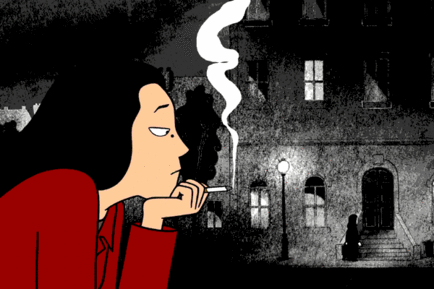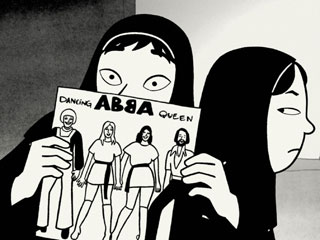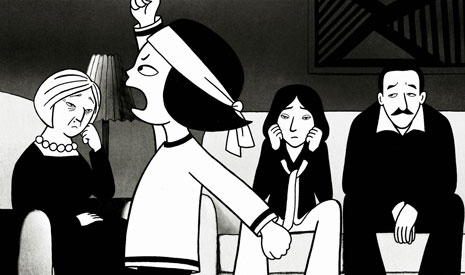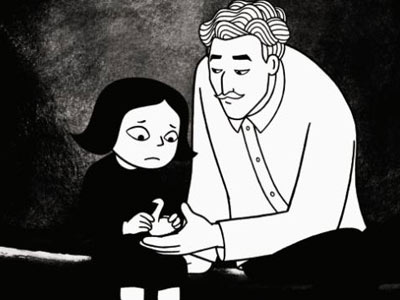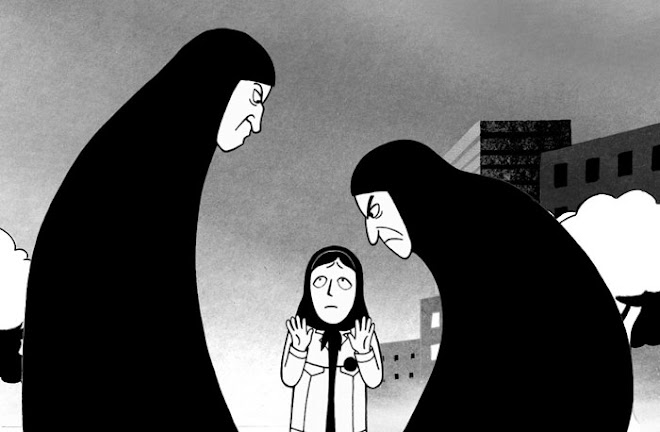
From page 307 to 309, the panels on these pages are very different from the rest of "Persepolis." These panels have no speech bubbles or captions. Since there is nothing to read, the reader just skims over the panels. The reader seems to fly through the pages, which mimics the frenzy of the characters having to clean up and pretend there was no party. I love it when a novel makes you do something physically that pertains to the plot. This is a great way that Marjane interacts with her audience, and shows a depicts a chase scene on page 309. On the last few panels on page 309, the figures seem to be jumping for the moon. I researched what the moon as a symbol represents, and the description is: intuitive, feminine, psychic, full illumination where everything unconscious is made conscious and all can be seen. This fits perfectly with the party. The fleeing figures are all men, who were just at a party with the women. On the 7th panel on page 309, the man jumps for the moon (femininity, illumination where he can be seen and free) but then falls because he is being chased by the guards. Women are an important part of "Persepolis", because Marjane seems to be feminist and life in Iran is extremely difficult for women. These men seem to be chasing and jumping for the moon which is feminism, telling the readers that possibly the men can't possibly continue to ignore the women. Even the guards who are also chasing the moon.
